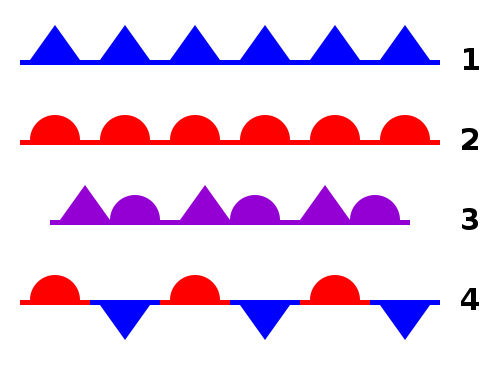What is the name of the gas we need to breathe?
Oxygen
What is air pressure?
The force of the air surrounding and above us pressing down on us. It is similar to the pressure divers face underwater.
What is the name of the tool we use to measure temperature?
Thermometer!
What does it mean to forecast the weather?
To forecast the weather means to predict the weather using tools and data. It's more than just guessing!
What is your teacher's name?
Ms. Spangler
(I really hope you got this one!)
At the start of the semester, we created two sets of parachutes: a small parachute and a big parachute. What happened to the big parachute? Why?
The large parachute fell slower because it was able to catch more air.
Air flows from high pressure to low pressure.
True or False: All parts of the Earth receive the same amount of sunlight over the course of 1 day.
False! Because of the shape of the Earth, the poles receive much less sunlight the equator.
What is the name of a scientist who studies and predicts the weather?
Meteorologist!
What is the name of the company Ms. Spangler works for?
(Hint: it's not the name of the school!)
Quest in Science
(It's been written on all the trays, all the supplies, and your teacher's ID badge all year.)
What is the most common gas in the atmosphere?
Nitrogen! Remember that the atmosphere is like a soup: we have a nitrogen broth with a bunch of oxygen pieces.
What is the name of the tool we use to measure air pressure?
Barometer!
Describe how color affects albedo and temperature.
Darker colors tend to absorb more energy from sunlight than they reflect, and thus become hotter. Lighter colors reflect more of this energy than they absorb, and thus stay cooler.
Which of the following weather symbols represents an occluded front?

3
What month was Ms. Spangler born in?
October
(Same as some of you!)
Name the layers of the atmosphere.
Troposphere, Stratosphere, Mesosphere, Ionosphere, and Exosphere.
Explain why the card "sticks" to the cup.

Water sits on the card. The high pressure air from the surrounding room pushes up on the card in an attempt to rush into the low pressure zone in the bubble. Because it cannot, the card and water stays in place.
How does the atmosphere affect the temperature on Earth? Why?
The atmosphere keeps Earth warmer than other planets because sunlight can easily enter the atmosphere, but has much more difficulty leaving the atmosphere once it reflects off the Earth.
Describe what happens during a cold front.
Cool air pushes underneath a mass of warm air, creating an unstable atmosphere that results in extreme weather.
What is the name of Ms. Spangler's cat?
(Hint: it's also the name of a white metamorphic rock.)
Marble! She is 2 years old.

Describe how we demonstrated the O2-CO2 cycle in class.
We blew bubbles into water containing an indicator. The indicator changed color, meaning there was CO2 in our breath. Then, we put a plant in the bottle and left it in the sun. The plant changed the color back to normal, meaning it took out the CO2 we put in the water.
Jack and Jill are experimenting with an atmospheric pressure mat. Jack says it is impossible to pick up the mat because it is sucking on the table. Jill says it is impossible to pick up because the air is pressing it down against the table. Who do you agree with? Why?
Jill! Air cannot "suck" on the table. Instead, the high pressure air presses down on the low pressure air underneath the mat, weighing it to the table.
How does temperature affect density? How does this affect water in the ocean?
Hot water is less dense than cold water, so it rises. Cold water sinks. This causes water to rise at the equator and fall at the poles, creating large, circular convection currents called gyres.
What does the map below tell you about the relationship between pressure and precipitation? Why?
Low pressure zones allow water to condense into liquid, forming rain. Therefore, high pressure is associated with dry, sunny conditions, while low pressure is associated with cool, wet conditions.
What is the name of Ms. Spangler's partner?
(Hint: he shares a last name with another science teacher you might know, and you might have had him as a substitute teacher!)
Mr. Walker!
He says hello and hopes you have a great spring break!
